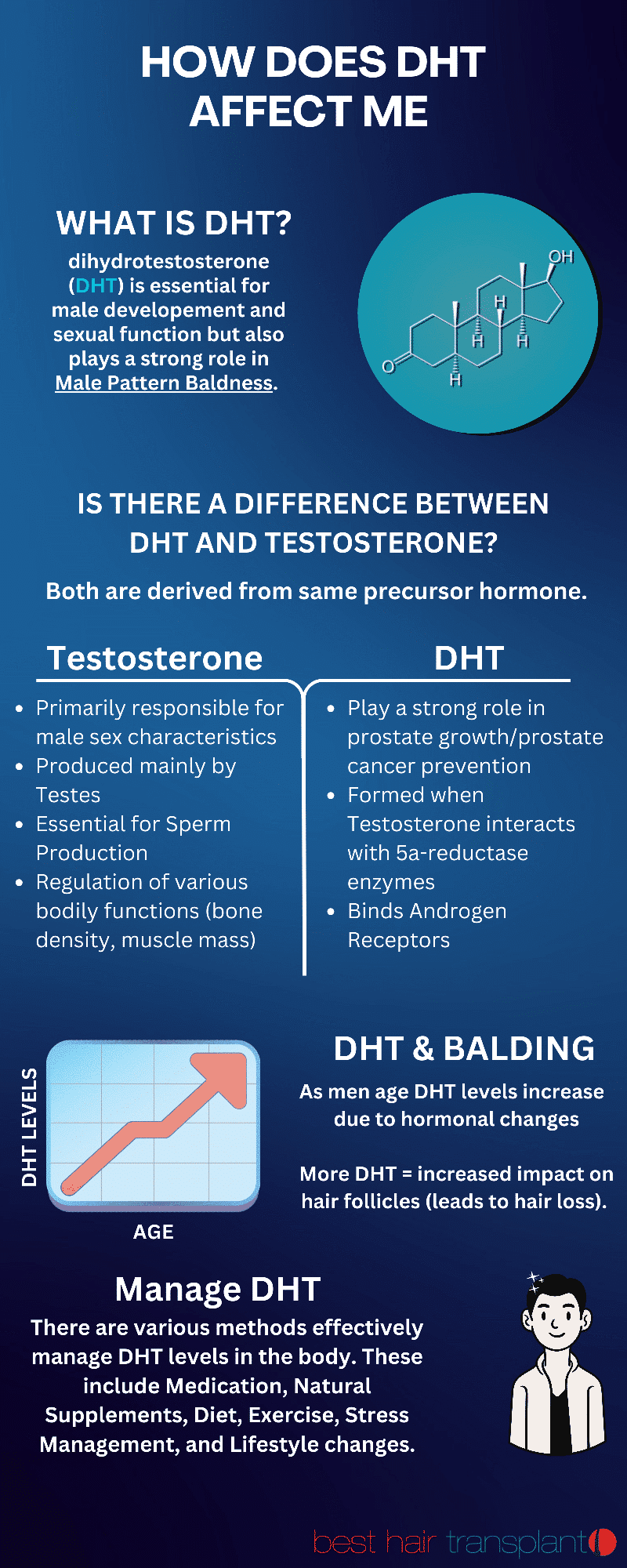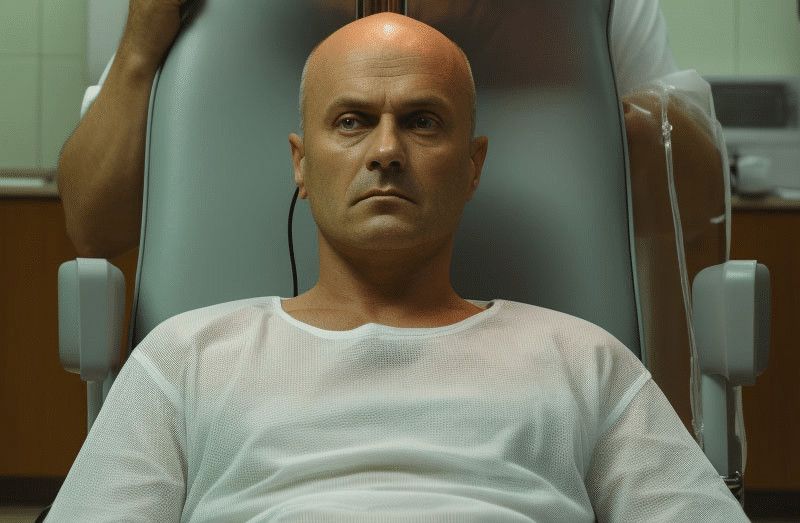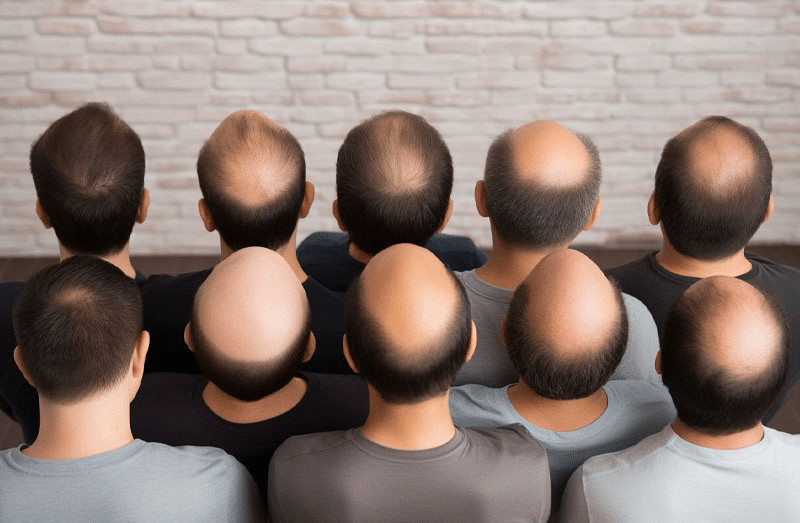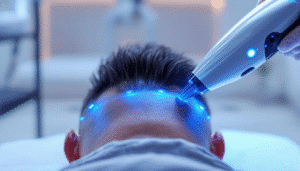Welcome to “DHT & Me – Everything You Need to Know,” a comprehensive guide on managing DHT levels and preventing hair loss.
Here, we will discuss the role of DHT in hair loss, how it affects the hair growth cycle, and various methods for controlling and blocking its production. We will also delve into the services offered at Best Hair Transplant in Redondo Beach, California, including surgical procedures and post-surgery maintenance.
Also known as dihydrotestosterone, DHT is a hormone that plays a vital role in male pattern hair loss. It is derived from testosterone and is responsible for the development of male physical characteristics during puberty.
How DHT Works in the Body?

DHT is formed when the enzyme 5 alpha reductase converts testosterone into a more potent form. This hormone then binds to androgen receptors in various parts of the body, including the scalp and prostate gland. While DHT is essential for normal male development and sexual function, it can also lead to hair loss in men who are genetically predisposed to androgenic alopecia.
androgenetic alopecia, commonly known as male pattern baldness, is a hereditary condition that affects over 50 million men in the United States alone. It is characterized by a receding hairline and thinning hair on the crown of the head, leading to partial or complete baldness.
Aside from its role in hair loss, excessive levels of DHT have also been linked to prostate cancer. However, the relationship between DHT and prostate cancer is still under debate, as DHT may play a protective role in preventing tumor growth.
To manage DHT levels and prevent hair loss, it is crucial to focus on two main factors: reducing testosterone production and blocking binding to androgen receptors. This can be achieved through various methods, including medication like finasteride or natural supplements like saw palmetto. At Best Hair Transplant, our experts can assess your individual situation and recommend the best course of action for controlling DHT levels.
What does DHT do?

The main function of DHT is to help develop and maintain male physical characteristics during puberty. This includes deepening of the voice, pubic hair growth of facial and body hair, and changes in muscle mass. It also plays a role in prostate health, as it has been linked to both prostate enlargement (benign prostatic hyperplasia) and prostate cancer.
As mentioned earlier, DHT is formed when the enzyme 5 alpha reductase converts testosterone into its more potent form. In addition to its effects on hair loss and prostate health, DHT also contributes to sex hormone regulation in men. It works by binding to specific receptors found in the testes, brain, and other tissues.
Interestingly, individuals with 5 alpha-reductase deficiency do not produce enough DHT and may experience a range of physical effects, including pseudohermaphroditism (ambiguous genitalia) and delayed or absent puberty. This condition is rare and can be managed through hormone replacement therapy.
DHT vs. Testosterone
DHT and testosterone are both hormones that play a crucial role in male or female differentiation, sexual development, and prostate gland health. While they are both derived from the same precursor hormone, testosterone is primarily responsible for male sex characteristics, while DHT plays a more significant role in prostate growth and prostate cancer prevention.
Testosterone is produced mainly by the testes in males and in smaller amounts by the ovaries in females. It is essential for sperm production and regulation of various bodily functions like bone density and muscle mass. On the other hand, DHT is formed when testosterone interacts with 5 alpha reductase enzyme. It then binds to androgen receptors found in tissues like the scalp, skin, and prostate gland.
The relationship between DHT and testosterone is complex, as they both play a role in maintaining normal bodily functions. However, excessive levels of DHT can lead to male-pattern baldness and enlarged prostate gland, while low levels of testosterone can cause issues with sexual development and function.
To maintain a healthy balance between DHT and testosterone, it is vital to understand your individual hormone levels and how they may be affected by factors like age, genetics, and lifestyle choices.
Why DHT affects people differently?

The effects of DHT on the body can vary from person to person based on several factors, including genetics, age, and health status. Some individuals may have a higher sensitivity to DHT, leading to increased hair loss and prostate enlargement.
Additionally, factors like reduced body hair growth or more testosterone can also impact how much DHT is produced in the body. Certain medical conditions, such as male hypogonadism (low testosterone production), can lead to lower levels of DHT.
On the other hand, excessive levels of DHT synthesis can occur in people with certain genetic variations or lifestyle habits that increase 5α reductase activity. This includes consuming foods rich in paracrine hormones like pumpkin seed oil or taking anabolic steroid supplements.
DHT’s connection to balding

DHT’s role in male pattern hair loss is well documented, and it is the main cause of hair loss in men who are genetically predisposed to androgenic alopecia. The hair follicles on the scalp contain androgen receptors, which bind to DHT and cause miniaturization of the pubic hair follicles. Over time, these miniaturized follicles produce thin, weak hairs that eventually stop growing altogether.
As men age, their levels of DHT increase due to hormonal changes. This results in a more significant impact on the hair follicles and can lead to progressive hair loss over time. However, genetics also play a crucial role in how susceptible an individual is to DHT-induced hair loss.
Studies have shown that individuals with a family history of male pattern baldness and androgenetic alopecia are more likely to experience hair loss due to DHT compared to those without a genetic predisposition. This is because they may have inherited genes that make them more sensitive to the effects of DHT on their hair follicles.
Aside from genetics, other factors can also contribute to how much DHT affects an individual’s hair loss. These include lifestyle habits like diet and exercise, stress levels, and underlying health conditions.
Managing Your DHT Levels
DHT differs from testosterone in its effects on the body and how it is produced. While both hormones are crucial for male sexual development and overall health, excessive levels of DHT can lead to hair loss and prostate enlargement. Managing DHT levels is essential for maintaining a healthy balance between the two hormones and preventing issues like erectile dysfunction or abnormal genitalia.
This can be achieved through medication or natural supplements that act as DHT blockers, reducing 5 alpha-reductase activity and blocking DHT binding to androgen receptors. It is also important to maintain a healthy lifestyle, as factors like increased body fat or consumption of certain foods can impact DHT production.
How to reduce DHT Levels

There are various methods for reducing DHT levels in the body, including medication and natural supplements. These approaches can be used alone or in combination to effectively manage DHT levels and prevent issues like hair loss and enlarged prostate gland.
Medication: One of the most common medications prescribed for reducing DHT levels is finasteride. This drug works by inhibiting 5 alpha-reductase activity, thereby decreasing the conversion of testosterone into DHT. Studies have shown that finasteride can reduce DHT levels by up to 70% and is effective in treating male pattern hair loss and enlarged prostate gland.
Natural Supplements: There are also natural supplements available that act as DHT blockers, such as saw palmetto extract, pygeum, and pumpkin seed oil. These supplements work by inhibiting 5 alpha-reductase activity and blocking DHT from binding to androgen receptors. However, it is important to consult with a healthcare professional before taking any supplements, as they may interact with other medications or have potential side effects.
Diet: Certain foods and nutrients can also help reduce DHT levels in the body. Foods rich in antioxidants, like green leafy vegetables and berries, can help combat oxidative stress that contributes to increased DHT production. Additionally, consuming foods high in omega-3 fatty acids has been linked to lower levels of DHT.
Exercise: Regular physical activity can also help maintain healthy hormone levels and reduce excess body fat, which has been linked to increased DHT production. Aim for at least 30 minutes of moderate exercise each day, and incorporate resistance training to improve muscle mass and strength.
Stress Management: Chronic stress can lead to hormonal imbalances, including increased DHT levels. Practicing relaxation techniques like meditation or yoga can help reduce stress and promote overall well-being.
Lifestyle Changes: Making healthy lifestyle choices, such as quitting smoking and limiting alcohol consumption, can also help reduce DHT levels in the body. These habits have been linked to increased 5 alpha-reductase activity and higher DHT production.
What is a DHT Blocker & How They Work
A DHT blocker is a substance that inhibits the production of dihydrotestosterone (DHT), a hormone responsible for male pattern baldness and other health issues. These blockers work by reducing the activity of 5 alpha-reductase, an enzyme that converts testosterone into DHT.
Medications & Supplements
There are various types of DHT blockers available, including medications like finasteride and natural supplements like saw palmetto extract. Medications like finasteride act as competitive inhibitors, binding to 5 alpha-reductase enzymes and preventing them from converting testosterone into DHT. This leads to decreased levels of DHT in the body, helping to prevent issues like hair loss and enlarged prostate gland.
Natural supplements that act as DHT blockers often contain ingredients that have been shown to inhibit 5 alpha-reductase activity, such as saw palmetto and pumpkin seed oil. These supplements work similarly to medications but may have a milder effect on DHT levels.
In addition to inhibiting 5 alpha-reductase activity, DHT blockers may also block the binding of DHT to androgen receptors in hair follicles and prostate tissue. This helps reduce the negative effects of this hormone, such as shrinking hair follicles and causing an enlarged prostate gland.
Aside from medications and natural supplements, lifestyle changes can also act as DHT blockers. For example, limiting alcohol consumption and quitting smoking have been linked to decreased 5 alpha-reductase activity and lower DHT levels in the body.
Positives & Negatives
It is important to note that while DHT blockers can be effective in managing hormone levels, they may also have potential side effects. These may include decreased libido, erectile dysfunction, and changes in mood or energy levels. It is important to consult with a healthcare professional before starting any DHT blockers, especially if you are currently taking other medications or have pre-existing health conditions.
Side effects of DHT blockers
While DHT blockers can be effective in reducing hair loss and prostate enlargement, they can also come with potential side effects. Medications like finasteride and dutasteride may cause sexual dysfunction, decreased libido, and breast tenderness in some individuals. Natural supplements may also have similar side effects or interactions with other medications.
It is essential to consult with a healthcare professional before starting any DHT blocker treatment to understand the potential risks and benefits for your specific situation. Additionally, regularly monitoring hormone levels while using DHT blockers is crucial for maintaining a healthy balance between testosterone and DHT in the body.
DHT Highs and Lows

While maintaining a balanced level of DHT is crucial for overall health and well-being, fluctuations in DHT levels can also have significant impacts on the body. Excessive levels of DHT have been linked to male pattern baldness, enlarged prostate gland, and changes in sexual function. On the other hand, low levels of DHT can lead to issues with sexual development and function.
Regularly monitoring hormone levels and understanding how factors like genetics, age, and lifestyle choices can affect DHT production is important for managing any potential imbalances.
Working closely with a healthcare professional can help you determine the best course of action for managing your DHT levels and promoting overall health. This may include using medications or natural supplements, making lifestyle changes, and regularly monitoring hormone levels to ensure a healthy balance between testosterone and DHT in the body.
Why You Should Get Hair Transplant Instead of DHT Blockers?
While DHT blockers can be effective in reducing hair loss, they do not address the root cause of the issue – weakened or damaged hair follicles. Hair transplant procedures, on the other hand, directly target and restore these damaged follicles to promote actual facial hair growth.
DHT blockers may come with side effects and need to be taken continuously to maintain results, while a hair transplant provides a permanent solution. It is important to discuss all options with a healthcare professional to determine which treatment is best suited for your specific condition and needs.
Also, it is important to note that while DHT blockers can help reduce hair loss, they may not be as effective in restoring hair growth once significant balding has occurred. In these cases, a hair transplant may be the best option for achieving desired results.
What is the role of DHT in Benign Prostatic Hyperplasia (BPH)?

Benign prostatic hyperplasia (BPH) is a condition where the prostate gland becomes enlarged, causing urinary symptoms such as difficulty urinating or frequent need to urinate. While the exact cause of BPH is not fully understood, it is known that DHT plays a significant role in its development.
As men age, their testosterone levels decrease while DHT levels remain constant or even increase due to increased 5 alpha-reductase activity. This excess DHT can cause the prostate gland to grow larger over time, leading to BPH. Managing DHT levels through medication or natural supplements may help prevent or manage symptoms of BPH.
As mentioned earlier, maintaining a healthy weight and making certain lifestyle changes such as reducing alcohol consumption and avoiding caffeine can also help regulate DHT levels and potentially improve symptoms of BPH.
Contact Best Hair Transplant
If you are considering a hair transplant or have further questions about DHT blockers and their role in hair loss, it is essential to consult with a reputable and experienced healthcare professional. At Best Hair Transplant, our team of experts specializes in hair restoration procedures, including both surgical and non-surgical options.
During your consultation, we will conduct a thorough evaluation of your scalp and discuss your medical history to determine the best course of treatment for your specific needs. Our goal is to provide personalized care and help you achieve natural-looking results that boost your confidence and quality of life.
Put a stop to Androgenic Alopecia
Schedule an appointment today to learn more about our services and how we can help you on your journey towards healthier, fuller hair! The end result? You’ll have peace of mind knowing that you’re in good hands with a team of experts who are dedicated to helping you achieve your hair restoration goals. Don’t let male pattern hair loss control your life, contact Best Hair Transplant today!
You deserve nothing less than the best when it comes to your health and well-being. So why wait? Take the first step towards a more confident and vibrant you by contacting us now! Remember, we’re here to help you every step of the way.
FAQs
What Happens When DHT Hormone Levels Are High?
When DHT hormone levels are high, it can lead to various issues such as male pattern baldness, androgenic alopecia, enlarged prostate, and changes in sexual function. This is because excess DHT can bind to androgen receptors on hair follicles and the prostate gland, causing them to become weaker or enlarged.
What happens when DHT levels are low?
Low DHT levels can also have significant effects on the body, including issues with sexual development sex hormones, and function. This is because DHT plays a crucial role in male sexual characteristics and libido. Low DHT levels may also contribute to hair loss as it provides essential nourishment for hair follicles.
Which vitamins block DHT?
Some vitamins and minerals have been shown to have DHT-blocking properties, including vitamin B6, zinc, and magnesium. These nutrients can help regulate 5 alpha-reductase activity and reduce DHT production in the body. Vitamins like biotin and saw palmetto may also help promote healthy hair growth by supporting overall scalp health.

